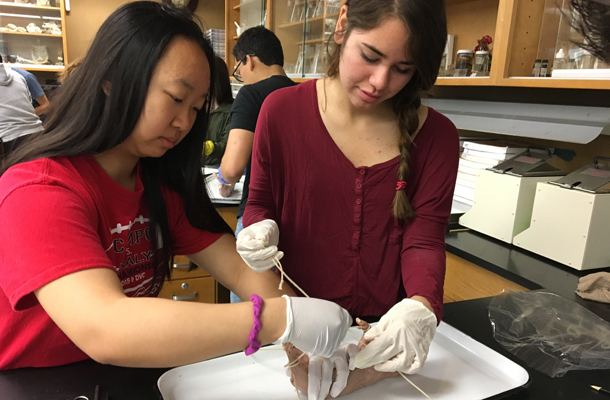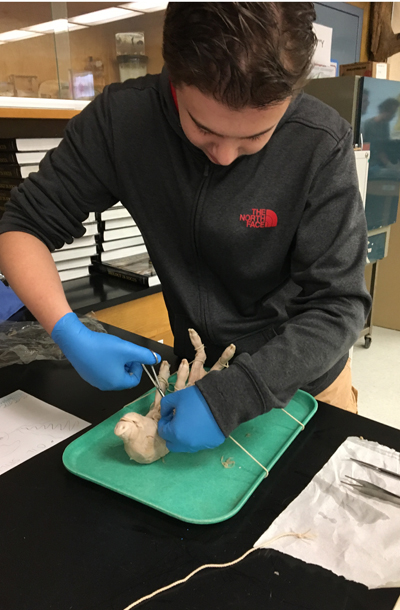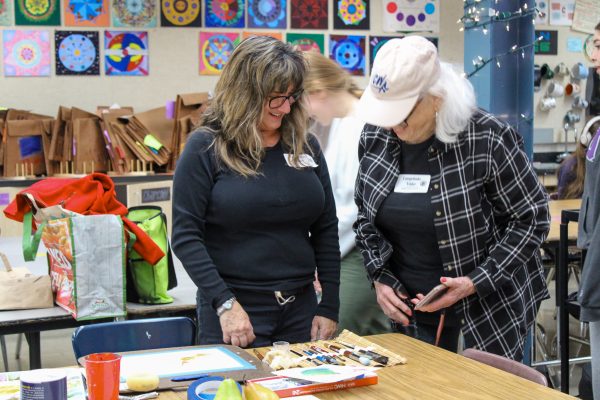Pig Dissections Inspire Some, Disturb Others
May 29, 2018
Students in Rene Gillibert’s AP Biology class learned about anatomy by dissecting fetal pigs during the week of May 21.
Gillibert said, “The purpose of the dissection is to learn human anatomy using a model organism and the fetal pig is a good model because they’re relatively inexpensive and their organs and organ systems are the same as humans.”
Using scissors and tweezers, students operated on the fetal pigs by cutting into the mouth and neck, exposing vital organs such as lymph nodes and the esophagus. They explored the pig’s intestines, stomach, liver, genitals, and brain.
Junior Tali Braun said, “I thought it was fun, a good interactive way to learn about pig anatomy. It was a little bit gross, but overall, a good experience.”
Junior Katherine Kaidantzis added, “It was interesting to see what was on the inside of the pig because apparently, their anatomy is pretty similar to ours, but it wasn’t my favorite thing to do because it smelled pretty bad… The liquid that the pigs were in was pretty gross.”
Junior Sabrina Fojut visited Gillibert’s class several times to participate in the dissection. “We cut open the brain which was really cool… All the things we learned in Psych I could apply to the brain because I know all the parts of the brain.”
Gillibert said the feedback from students was “overall, I think mostly positive. Some people, this is the first time they’ve ever tried to cut open an animal. They get a little funny about it.”
According to junior Rachel Symanszki, a student in Gillibert’s 2nd-period class, fainted from the strong odor during the dissections.
Gillibert said the packaged fetal pigs were “purchased a year or 2 ago so there’s a lot of smell in the preservatives.” Although he usually purchases the fetal pigs each year from a biological supply company that sells preserved animals for biology teachers, this year, Gillibert saved some money by using the pigs that another teacher in the Bay Area donated to him.
Gillibert said the pig dissections have been so influential to students’ career paths that he’s “had students after their pig dissection decide they want to go on and study veterinary medicine or to become surgeons.”
“I don’t really know what I’m doing in the future but after that [the pig dissection], I would say I’m a little more interested in that kind of medical field,” said Fojut.
However, Kaidanztis said she was “not really into dissecting things. I’d probably pick things like plants instead of dead animals.”
“I’d say that touching this over 1-year dead pig and using an instruction book from the 1960s was the worst part… It’s a bonding experience. Bonding over touching a fetal pig,” joked Braun.






